Living Off the Spectrum
- Jim Miller

- Mar 8, 2022
- 8 min read

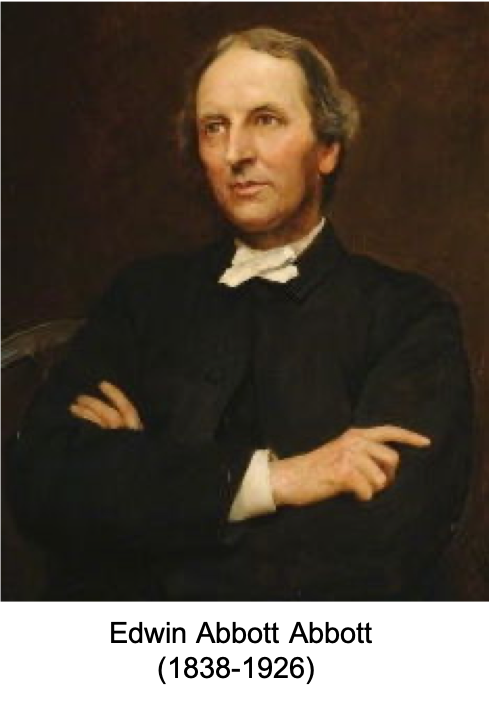
In 1884 English schoolmaster, Anglican priest and theologian, Edwin Abbott Abbott (no mistake, his middle and last names were the same) published a satirical novella on Victorian society using geometric metaphors. Flatland was set in a two-dimensional world with visits to Pointland, Lineland and Spaceland. In the work, Abbott offered two critiques: societies, particularly classist societies, tend to be intolerant of change; and individuals are resistant to challenges to their worldviews.
I’m struck by the apparent propensity of Homo sapiens to live in Lineland. How many aspects of our lives do we typically place on a linear spectrum or, more problematically, reduce the spectrum to polar opposites? There are red and blue states and, more recently, purple “swing states.” There is the conservative/liberal spectrum with, perhaps, libertarians somewhere in the middle. There is the native/alien spectrum with green cards maybe in the middle. There was the traditional male/female polarity.

But today studies of human sexuality have led to a more complex set of sexual types that do not fall on any neat spectrum (e.g. LGBTQIA+).
There’s the persistent polarity of us and them.
But, the universe in which we live, nature taken in its fullness, is not one or two dimensional. According to the variety of cosmological string hypotheses (usually called “string theories”) there are hypothetically 10, 11 or even 26 dimensions to the universe.

In our ordinary experience we deal with at least three dimensions (Spaceland). However, if you expand your perspective to include Einstein’s General Theory of Relativity, then we live in a four-dimensional spacetime continuum (Relativity-land?).
Cosmic geometry aside, the number of cultural dimensions in which a person lives is a matter of social imagination not simply the facts of the world. To be sure, Homo sapiens have the capacity to imagine things that do not and perhaps never could exist in nature (e.g., unicorns, squared-circles). But imagination is also a precondition for discovery of new facts about the universe and a foundation for technological innovation.
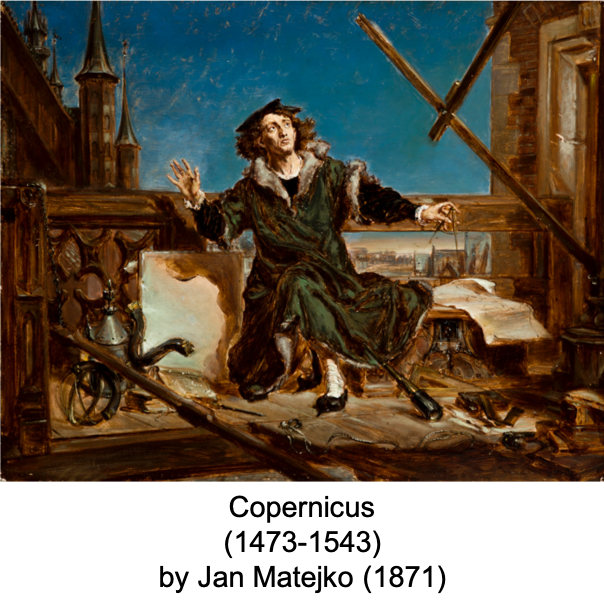

Discovery often does not result simply from new data but more often from seeing old data in a new way. Copernicus did not have better observations of the heavens than Ptolemy. What he did have was a coherence itch due to Ptolemy’s use of the geometric form, the equant. For Copernicus that geometric feature introduced irregular motion into the heavens. But classically, the motion of the heavens was imagined as perfectly circular and regular. Copernicus inherited the idea of perfect heavenly motion from Aristotle’s natural philosophy that was influenced by his teacher, Plato.

Drawing on equally classical and ancient Pythagorean cosmologists, particularly Aristarchus of Samos , Copernicus reimagined the universe with the Sun in the center and the Earth and other planets revolving around the Sun. That imaginative geometric move eliminated the need for the equant to account for observed planetary motions. A cultural revolution had begun. (Pun intended.)
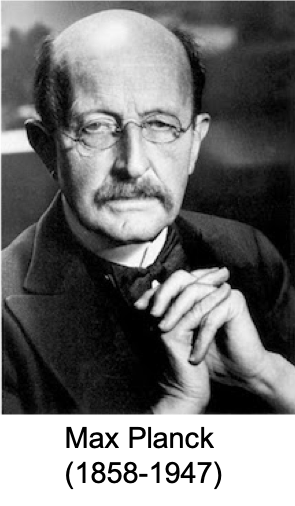
Imagination is the process of making meaning out of our experience. But our experience is also conditioned by how we have imagined the world in the past. Once domesticated, imagination solidifies into normative experience, which then exerts a cognitive inertia against the imagination. As Max Planck, German physicist, noted,
“A new scientific truth does not triumph by convincing its opponents and making them see the light, but rather because its opponents eventually die, and a new generation grows up that is familiar with it.”
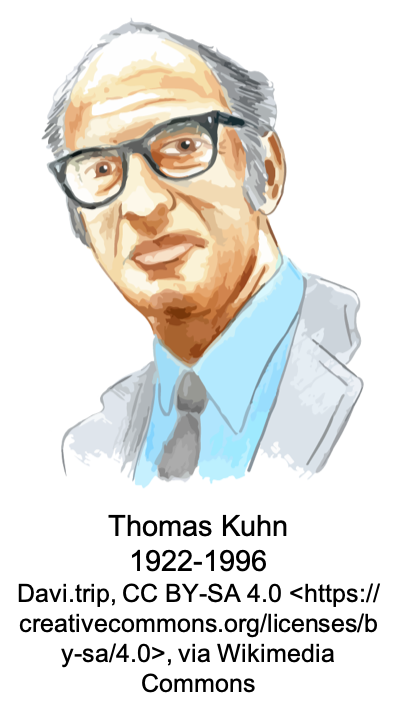
At the same time so-called “settled science” provides the context or background against which anomalies in experience appear. Some such anomalies provoke a degree of cognitive dissonance that cries for an imaginative resolution. It is in such cases that some scientists move from what Thomas Kuhn called “normal science” to “extraordinary science.” This latter is science that turns its attention to the time-honored foundations of the current science and imagines how adjustments or changes in those foundations might resolve the dissonance while, at the same time, maintaining the explanatory robustness of the previous scientific regime.
Kuhn proposed that such a transformative historical process was an intellectual revolution wherein one scientific paradigm was overthrown by an emergent one. In a way reminiscent of Plancks’ observation, Kuhn did not see gradual adoption of the new science by the scientific community. Rather he saw the process as an intellectual conversion of individual scientists that eventually led to a transformation of what the scientific community identified as normal science.

Offering a more evolutionary model of scientific change, Stephen Toulmin (1922-2009) suggested that new scientific hypotheses are like genetic mutations that are selected for or against in the context of the total scientific environment at the time. Some hypotheses (e.g., quantum mechanics will succeed and some will not (e.g., the phlogiston theory of combustion. With changes in the scientific environment some long established scientific ideas may become extinct or at best be isolated in relatively small scientific niches (e.g., Newtonian mechanics). This process of change in science is managed within a social infrastructure (e.g., scientific laboratories, scientific meetings, peer review journals, etc.) wherein imaginative ideas are offered and then rigorously tested by observations of nature in the lab or in the wild.
But is this a process of imaginative transformation only applicable to the sciences?
I don’t think so. Other cultural environments also exhibit this process, even if over longer periods of time, implicitly rather than explicitly, and without the institutional infrastructure to manage the process of change. Within the Christian Bible, I believe, at least two major theological transformations can be observed.

As I have noted in earlier blogs once David had secured himself on the throne of Judah he went on to unify it with the northern tribes of Israel forming the United Kingdom of Judah and Israel. He was confirmed in this achievement by Nathan, the prophet that was a part of his court. Speaking in the name of the Lord, Nathan declared:
“When your days are fulfilled and you lie down with your ancestors, I will raise up your offspring after you, who shall come forth from your body, and I will establish his kingdom.He shall build a house for my name, and I will establish the throne of his kingdom forever. I will be a father to him, and he shall be a son to me. When he commits iniquity, I will punish him with a rod such as mortals use, with blows inflicted by human beings.But I will not take my steadfast love from him, as I took it from Saul, whom I put away from before you.Your house and your kingdom shall be made sure forever before me; your throne shall be established forever.” [2 Samuel 7:12-16]
The throne of David, from which he and his descendants would rule over the United Kingdom, was “established forever.” Unfortunately, this prophetic word did not take into account the political rivalries that followed the death of David’s son, Solomon, when the kingdom fell into civil war and the northern portion separated itself from the southern. In addition, neither the Assyrians not the Babylonians were informed about Nathan’s prophetic “Word of the Lord.”

First, the Assyrians inundated the northern kingdom, spreading much of its population across its empire and bringing peoples from other cultures into the lands that had constituted the northern kingdom. Then about 135 years later the Babylonians sacked Jerusalem putting an end to the Davidic royal line and exiling a significant portion of the population of the southern kingdom into Babylon. There the exiles were allowed to retain their cultural identity, though it was impaired by the apparent destruction of the nation.
The exiles had what appeared to be three theological choices: they could conclude that Yahweh had abandoned them; they could judge that Nathan had been mistaken in his prophetic declaration; or they could project that declaration into the future with the expectation of a restoration of the nation under a king from the lineage of David. They chose the latter and so the Messianic Hope was established.

For the second Biblical example of theological transformation, skip forward 600 or so years and you have Jesus, a descendant of David, after three years of public engagement, entering Jerusalem and being celebrated as a king.
Another Hebrew prophet, Zechariah, in the 6th century (BCE) had written:
"The Coming of Zion's King – See, your king comes to you, righteous and victorious, lowly and riding on a donkey, on a colt, the foal of a donkey."
Zechariah was anticipating the restoration of the kingdom and the coming of the Messiah following the Persian conquest of the Babylonians and the release of the Hebrew exiles from captivity. Reference to this prophetic passage was apparently intended in Jesus entry into Jerusalem, what Christian’s celebrate as Palm Sunday.
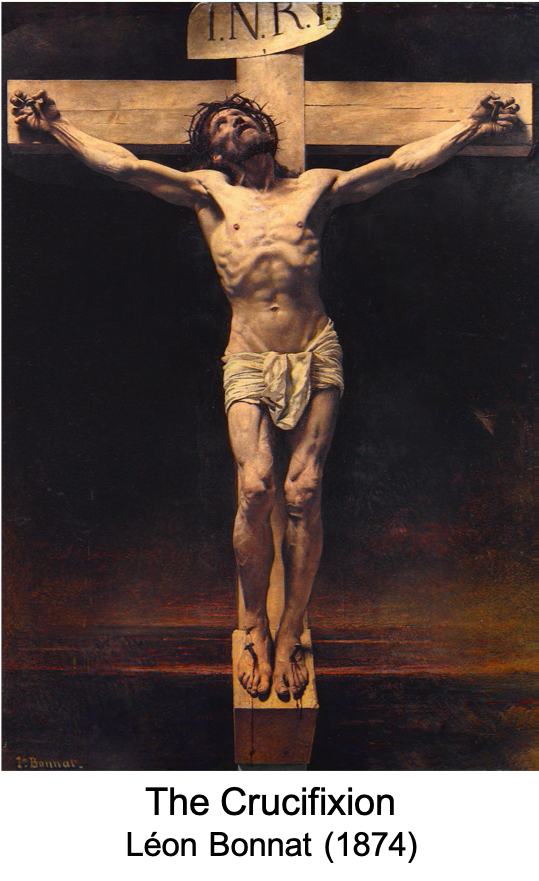
But just five days later Jesus had been arrested, tried several times, and executed by means of crucifixion. As his disciples clearly knew, this was not the path of a Messiah. Yet, according to the Gospel of Mark, in particular, Jesus himself had warned them of this outcome. Contrary to his disciples’ expectations, Jesus had united two traditions: that of the Messiah and that of the Suffering Servant. It is no wonder that his disciples were confused and frightened and so denied even knowing him and went into hiding.
Christians hold that Jesus’ resurrection is a sign of his Messiahship. But in fact, nothing happened geo-politically. The Roman occupation of Palestine was not overthrown, the People of Israel were not reunited in a kingdom over which Jesus ruled, and that hoped for kingdom did not become the center of the geopolitical world. Is it any wonder that Jews do not accept Jesus as the Messiah?

But, as the Hebrews of the 8th and 7th centuries BCE transformed the Royal Theology into the Messianic Hope, in a similar fashion the early Christians transformed the Messianic Hope into a Second Coming in power by the Suffering Servant, one in which the outcome would not be simply a geo-political restoration but a cosmic transformation, a new heaven and new Earth.
These two theological acts of imagination represent, in my view, theological revolutions akin to those found in the major theoretical transformations in science. The major difference is that in the sciences these transformations are acknowledged while in theology they are not. So, for example Christians backread Jesus into the Hebrew scriptures holding that the Messianic and Servant themes found there are prescient references to Jesus.
Actually, it might be better to view Jesus not as the fulfillment of a preestablished plan but rather as a theological innovator who lived off the spectrum. In a sense he did not discover any new “theological data.” Instead he took two strands of tradition and wove them together in an imaginative original way, creating a new whole theological vision within which he then lived. It confounded all those around him, his opposition and his supporters.
Today, we seem to be locked into viewing life in a linear fashion or worse in terms of polar opposites. Our social and cultural conflicts, seem to me, more issues of a lack of imagination than conflicts over primal values. When I hear passionate arguments of advocates for different points of view, I am inclined to want to quote Mercutio from Shakespeare’s Romeo and Juliet:
“A plague o' both your houses!”
Or perhaps more generously what Hamlet says to Horatio:
“There are more things in heaven and earth … than are dreamt of in your philosophy.”
This last quote from Shakespeare is eerily similar to that of J.B.S. Haldane:
“The universe is not only queerer than we imagine, it is queerer than we can imagine.”
Allowing our creative imagination to intercede in the midst of our conflicts might not only nurture a sense of humility but might lift us beyond the limitations of our linearity that we might live more fruitfully off our self-imposed spectrums.








Comments